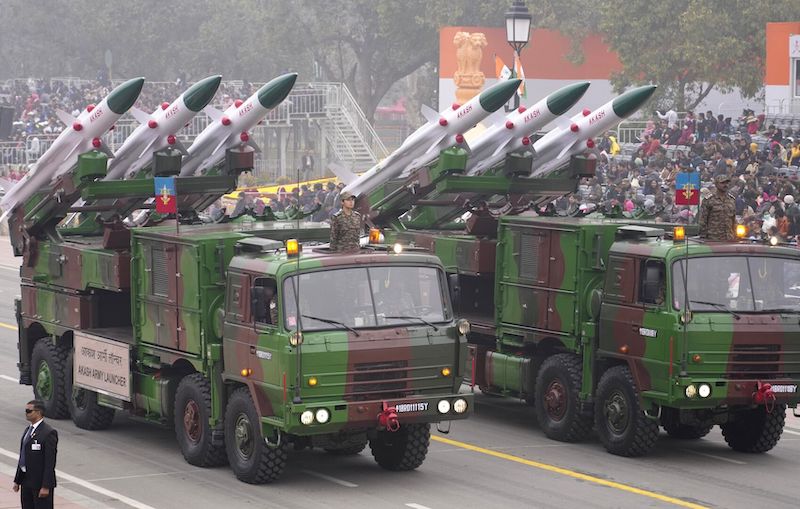 Akash air-defence missiles during a Republic Day parade in New Delhi. (File photo)
Akash air-defence missiles during a Republic Day parade in New Delhi. (File photo)
New Delhi: The Indian Air Force demonstrated its technological superiority during Operation Sindoor by successfully jamming Pakistan’s Chinese-supplied air-defence systems, completing the mission in just 23 minutes, the government said on Wednesday. It also said Pakistan’s air-defence systems were rendered ineffective against Indian strikes, with the Chinese-origin systems proving helpless during the operation.
An official statement released on the government’s Press Information Bureau (PIB) website indicated that Operation Sindoor produced concrete evidence of hostile technologies neutralized by Indian systems. These included the much-hyped PL-15 missiles of Chinese origin, Turkish origin YIHA Kamikaze drones and Pakistan’s long-range rockets, quadcopters, and commercial drones. It said all of them were shot down by India’s multi-layered air-defence grid.
The release further said that to safeguard its military and civilian assets, India deployed man-portable air-defence systems (Manpads), short-range missile systems, medium-range air-defence systems, and long-range air-defence systems, which proved to be force multipliers during the operation. The Indian armed forces also utilized legacy air-defence gun systems, such as L-70s, Zu-23mm, Schilka, among others.
On the intervening night of May 9 and 10, India carried out retaliatory strikes targeting key Pakistani airbases, including Nur Khan and Rahimyar Khan, with surgical precision after Pakistan tried to attack Indian military sites following India’s air and missile strikes on terror bases in Pakistan and Pakistan-occupied Kashmir.
During the operation, Indian armed forces also employed loitering munitions which devastated Islamabad, destroying high-value targets, including enemy radar and missile systems.
In the statement, the government said: “All strikes were executed without loss of Indian assets, underscoring the effectiveness of our surveillance, planning, and delivery systems.”
“The use of modern indigenous technology, from long-range drones to guided munitions, made these strikes highly effective and politically calibrated,” the statement said.
The recovered and identified debris showed that despite Pakistan’s attempts to utilize advanced foreign-supplied weaponry, India’s indigenous air-defence and electronic-warfare networks remained superior.
It said due to the multi-layered air-defence grid in place, Pakistan Air Force attacks were prevented on Indian airfields and logistic installations during the night of May 9-10.










